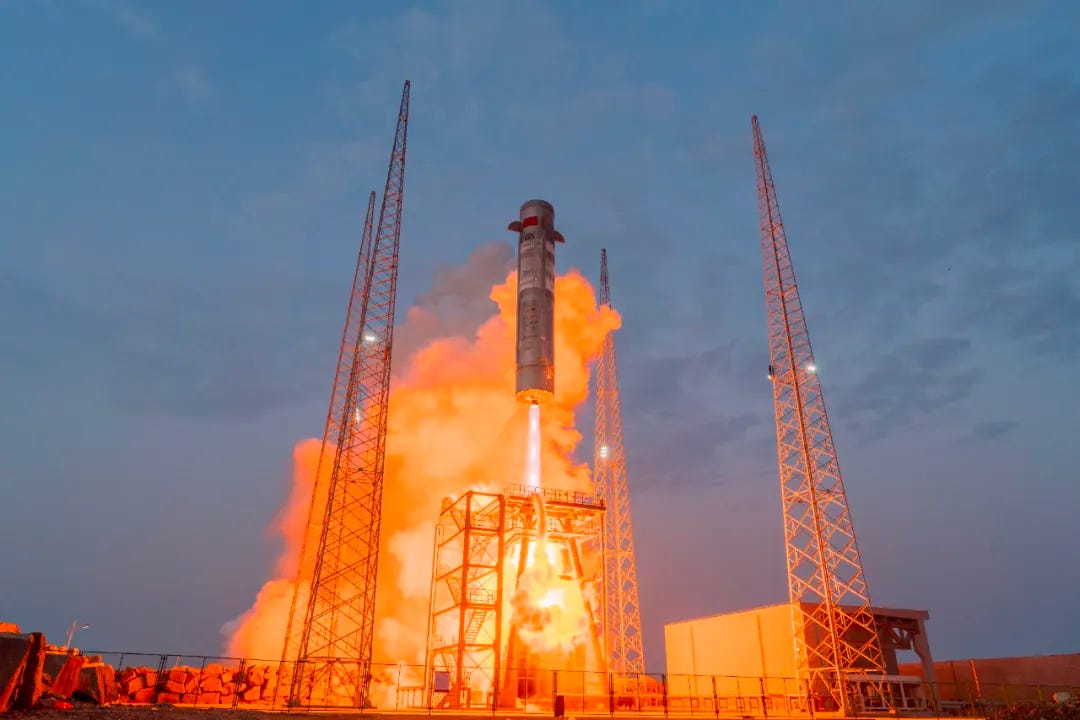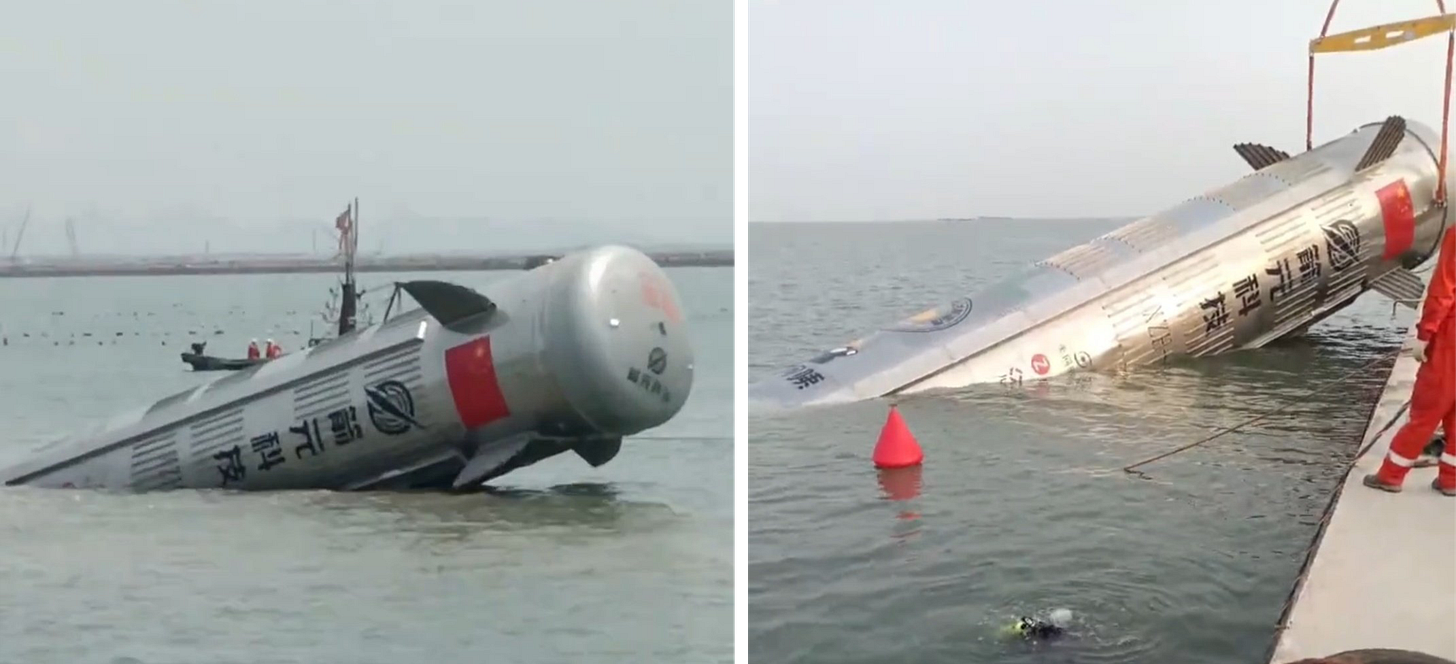Space Epoch Conducts Reusable Rocket Hop!
Another reusable rocket test took place off the coast of Haiyang.

Space Epoch, also known as SEPOCH or Jianyuan Technology (箭元科技), performed its first hop test using its Yuanxingzhe-1 (元行者一号) vertical takeoff vertical landing test vehicle off the coast of Haiyang (海阳市).
This hop test took off at 04:40 am China Standard Time on May 29th (20:40 pm Universal Coordinated Time, May 28th) with a single engine powering ascent. For an undisclosed amount of time, the vehicle headed skyward using its single engine before shutting down to coast to a peak altitude of 2.5 kilometers. After reaching peak altitude, the test vehicle began its unpowered descent. During the descent, the single engine restarted, slowing the test vehicle down for a soft splashdown next to its launch pad. The test flight was claimed to have lasted 125 seconds.
The hop test vehicle was powered by a single Longyun engine burning liquid methane and liquid oxygen, which generates 70 tons of thrust, from Jiuzhou Yunjian (九州云箭). It weighs approximately 57,000 kilograms, being made out of stainless steel, with a diameter of 4.2 meters and a height of 26.8 meters. Four fins are also on the test vehicle for improved stability during unpowered descent.
According to Space Epoch, this hop test verified the company’s manufacturing techniques in a flight environment, in-flight engine thrust adjustment, stable unpowered descent, an engine restart, and a powered hover ahead of a splashdown. The company also added the following in their post-test blog post:
“The success of this flight recovery test marks a major breakthrough in the development of liquid reusable rockets, holding milestone significance. Space Epoch has become China's first enterprise to achieve a technological breakthrough in 'liquid oxygen methane + stainless steel + soft sea landing recovery. Simultaneously, this achievement signifies that large-scale stainless steel reusable launch vehicles have entered the engineering application phase, paving a solid foundation for the maiden flight of the Yuanxingzhe-1 rocket later this year.”

“Space Epoch strictly adheres to the national requirements for the safe, healthy, and orderly development of the commercial space industry. The company firmly upholds safety bottom lines, rigorously implements test safety management regulations and quality management requirements, thoroughly identifies major test safety risks, formulates comprehensive contingency plans, and ensures the complete success of its tests.”
If there are any problems with this translation please reach out and correct me.
As the company mentions, this hop test is informing the development of its Yuanxingzhe-1 launch vehicle, which is partially reusable. The rocket is planned to be a two-stage vehicle with nine engines on the first-stage and one on the second-stage, sourced from Jiuzhou Yunjian, that is 4.2 meters in diameter and 64 meters tall. Yuanxingzhe-1 is expected to lift 6,500 kilograms to a 1,100-kilometer sun-synchronous orbit and more to lower, less energy-costly orbits. Recovery of the vehicle's first-stage will have it land at sea while being oriented by a series of small thrusters.
It remains to be seen whether Space Epoch can perform Yuanxingzhe-1’s debut flight before the end of the year.
Tracking footage via 卡尔达瓦里希 on Weibo.
This hop test has been a long time coming, with the test vehicle first firing up on December 5th 2024 for a static fire. That static fire lasted for 20 seconds with the Longyun engine generating 70 tons of thrust to verify ignition and control systems, as well as a shutdown.
In February, the company was preparing to conduct the hop test along with in April. It has been said by locals that the Yuanxingzhe-1 test vehicle was sent back to the factory and performed other static fires multiple times.
Space Epoch’s hop test follows similar tests from LandSpace and Deep Blue Aerospace late last year. The hop was also the third reusable rocket test to utilize an engine from Jiuzhou Yunjian, following two hops from the China Aerospace Science and Technology Corporation and the Shanghai Academy of Spaceflight Technology.


